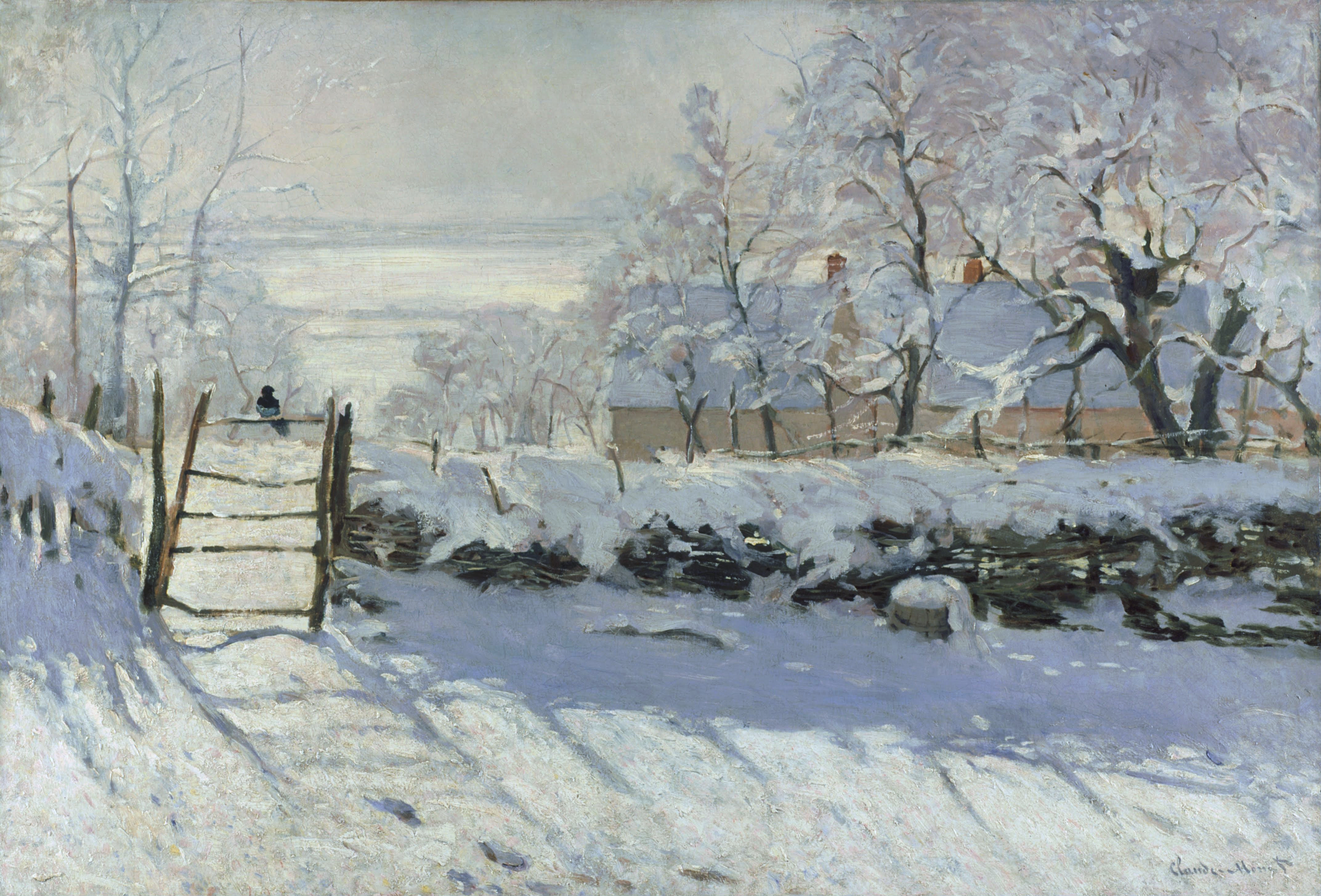Walk: Presidio Pickleball
Distance: 2.5 miles, 2 hours pickle, Yoga stretch
 |
| Claude Monet (1840-1926) , The Magpie, 1868-1869, 3' x 4.3' , o/c, Musee d'Orsay |
| detail |
Winter has its own rewards, and, for Ciwt, one of them is that it produced the day Claude Monet painted The Magpie. At once universal and highly personal, it is one of her favorite art works. As a solitaire herself, she relates deeply to that single bird, and everyone who has woken to the soft, hushed glow of morning after a snowstorm is brought back to it viewing this work.
The Magpie's restful simplicity belies the physical and creative challenges Monet undertook to create it. Freezing cold for one. Most landscape artists before (and after) him would make sketches outdoors and then return to their studios to paint the final work. But Monet was so obsessed with capturing nature exactly that he painted entirely outdoors, often from predawn to the end of day. The average temperature in Normandy, France, where The Magpie was painted, hovers around freezing. A French journalist happened to see him one day and described the scene: We have only seen him once. It was in the winter, during several days of snow, when communications were virtually at a standstill. It was cold enough to split stones. We noticed a foot-warmer, then an easel, then a man, swathed in three coats, his hands in gloves, his face half-frozen. It was M. Monet, studying a snow effect.[11]
Monet himself was apparently so caught up in, even exhilarated, by his quest that he once wrote a friend: I painted part of the day today, while it was snowing continually: you would have laughed to see me entirely white, my beard covered with icy stalactites.
So it was a physical feat for Monet to paint his snowscenes, but it is the artistic breakthrough they represented which stunned and still holds the art world's attention. Monet captured snow! This hadn't been done so successfully before him. Snow like the sea (which he is also a master at painting) is elusive. As light plays with it, it is actually many colors; pale, it is also luminous; its shadows are not black but, as Monet realized, the convention-shocking blue of The Magpie. Snow is so challenging that even with his work before their eyes, artists were (and are) hard put to equal Monet's feat. In the late 1870's his friend and famous artist, Edouard Manet, tried to paint a snow scene but gave up exclaiming "No one can do this like Monet!"
In some ways Monet was the sole bird of his painting. Although a smattering his 'renegade' artist friends recognized the novelty and daring of The Magpie, its initial reception is sadly typical of his impoverished twenty year struggle for recognition. The Royal Academy powers that be in Paris and, consequently the French public whose tastes were entirely formed by them, were flabbergasted by the unorthodox 'paleness' of the work and turned it down flat for the 1869 salon.
Now of course Monet is that 'rare bird' who not only achieved grand success in his lifetime and is known as the Father of Impressionism but whose reputation and following continues to grow and whose works - including The Magpie - count among the most beloved in history.
No comments:
Post a Comment